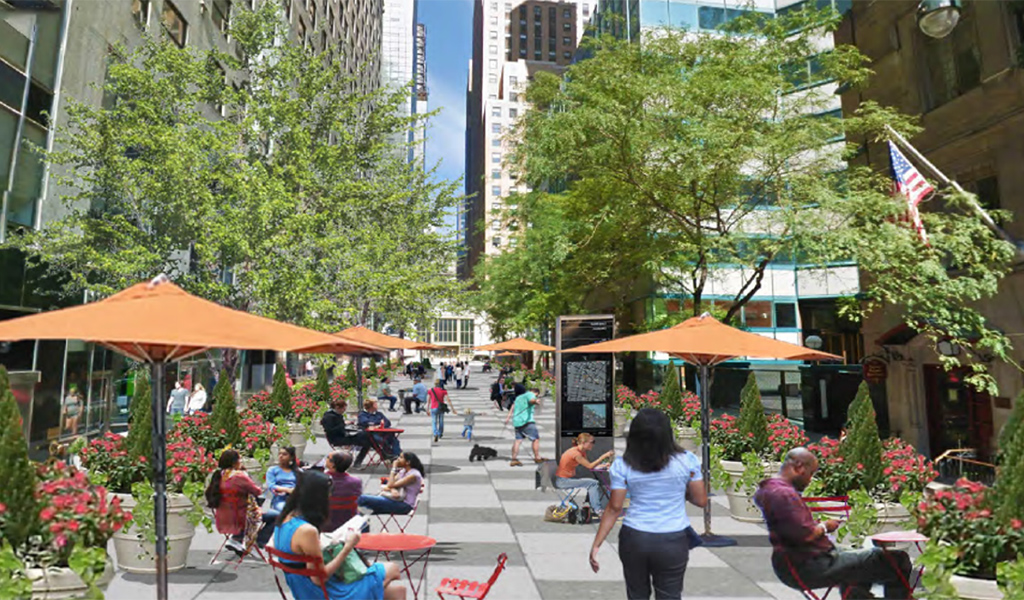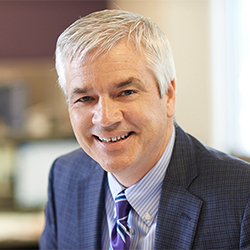Known to many as “the city that never sleeps,” New York City is a global leader—with more Fortune 500 companies than any other city, the world’s largest stock exchanges, an evolving technology industry centered along “Silicon Alley,” a booming healthcare and medical industry, and the nation’s foremost center of mass media, publications, and the arts. Additionally, with some of the nation’s most expensive residential and commercial assets, real estate plays a significant role in the city, particularly Midtown Manhattan, which serves as one of the world’s largest central business districts.
With this level of global success and leadership comes the population to support it. New York City has the highest population density of any major city in the U.S. with 8.7 million people (more than 27,000 people per square mile)—a population more than twice that of second ranked Los Angeles. This increase in population has caused a strain on critical transportation infrastructure that gets people in and out of this world-class city.
How do we continue to successfully grow, and strategically and efficiently densify New York City, to maintain its competitive edge? How do we continue to enhance the differentiating urban experience that New York City offers such that corporations and people alike continue to pick the Big Apple as their city of choice?
Infrastructure upgrades and enhanced transportation options that provide more access and connectivity across the city is a must.
Over the last 100 years, the NYC subway system has influenced the city’s growth and sustainability. However, the subway system has been severely overcrowded since its inception and is constrained by limits to its geographic coverage to important centers of transportation and commerce, such as LaGuardia and Newark Airports. A crowded and geographically limited subway system has caused a significant increase in ridership through app-based services like Uber and Lyft, with some reports estimating more than 25,000 additional cars on New York City streets every day. And, with only a few transportation options to cross the lower Hudson River and New York Harbor, freight traffic has slowed, competing for crossing use with mass transit and cars.
Rebuilding infrastructure alone will not allow the city to maintain its place as a global leader. We need to invest in options to move people and goods more efficiently, leveraging technology to approach transportation infrastructure as a unified system. Multimodal transportation options, integrated corridors, and better utilization of space can help improve mobility, increase connectivity and accessibility, and build the future for the world’s leading urban economic engine.
Where are some of the current opportunities to enhance transportation options and improve infrastructure?
Currently, there is no mass transit option to LaGuardia Airport, which is among the region’s busiest transportation hubs, experiencing continual record-setting increases in passenger traffic. AirTrain LaGuardia, the proposed 1.5-mile people mover system and elevated railway, will provide service to the airport via connections with the subway and Long Island Railroad, similar to the AirTrain to JFK. Without the rail link, passengers will continue to face frequent roadway congestion and unpredictable delays.
One of the more critical programs in the city, if not the country, that requires continued focus and investment is the Gateway Program, a planned phased expansion and renovation of the Northeast Corridor (NEC) rail line between Newark and New York City. The NEC is the most heavily used passenger rail line in the U.S., and a failure on this aging system would devastate the nation’s economy. The program consists of multiple projects and aims to build new bridges and tunnels, expand existing stations, double train capacity across the Hudson River, and allow for additional high-speed rail service while providing resiliency against future extreme weather events. Innovative funding and project delivery options must continue to be implemented such that the program moves forward.
In the heart of Manhattan, the Greater East Midtown Rezoning will facilitate the construction of approximately 16 new office buildings over the next 20 years, totaling more than six million square feet of new commercial development over a 78-block area. These zoning changes aim to ensure Greater East Midtown continues to be a premier central business district. The rezoning also allows for the creation of new open spaces on publicly— and privately—owned property to enhance community experience.
Hudson Yards is also playing a significant role in changing the city’s landscape as the nation’s largest development, with more than 18 million square feet of commercial and residential space. Innovative densification strategies at their best, when complete, the area will be home to 4,000 residences, a new public school, 100 shops, and one million square feet in retail/mixed use. With a focus on creating community connections, half of the site has been dedicated to open space, creating 14 acres of gardens, plazas, and other open spaces.
Along with these major projects and developments, the city has remained true to improving transportation options at the human level with significant investments in Vision Zero, an initiative to eliminate traffic deaths and serious injuries, as well as the CitiBike program, which now has more 145,000 members. The importance of people being able to move efficiently and safely throughout the City cannot be understated. It is programs like these that are equally important as the big builds in maintaining livability of the City.
Continued investment in projects to improve New York City’s infrastructure—enhancing transportation to more effectively move people and goods in and out of the city, and creating inviting and purposeful open spaces and amenities, will play a major role to strategically densifying the city, allowing it to welcome businesses and residents, maintaining its status as THE global leader.
But investments must be smart. Infrastructure must be sustainable. The city must be resilient. The government, public and private entities, owners, operators, and consultants must all work together to collaboratively build New York City’s future.

How Can VHB Help
Mike presented the keynote address at CityAge: Build the Future in New York City. This event connected a global leadership network in business, government, design, and research who offered the fresh thinking required to build the future in NYC and other major economic regions like it. Watch our Future Cities video and imagine the possibilities.



